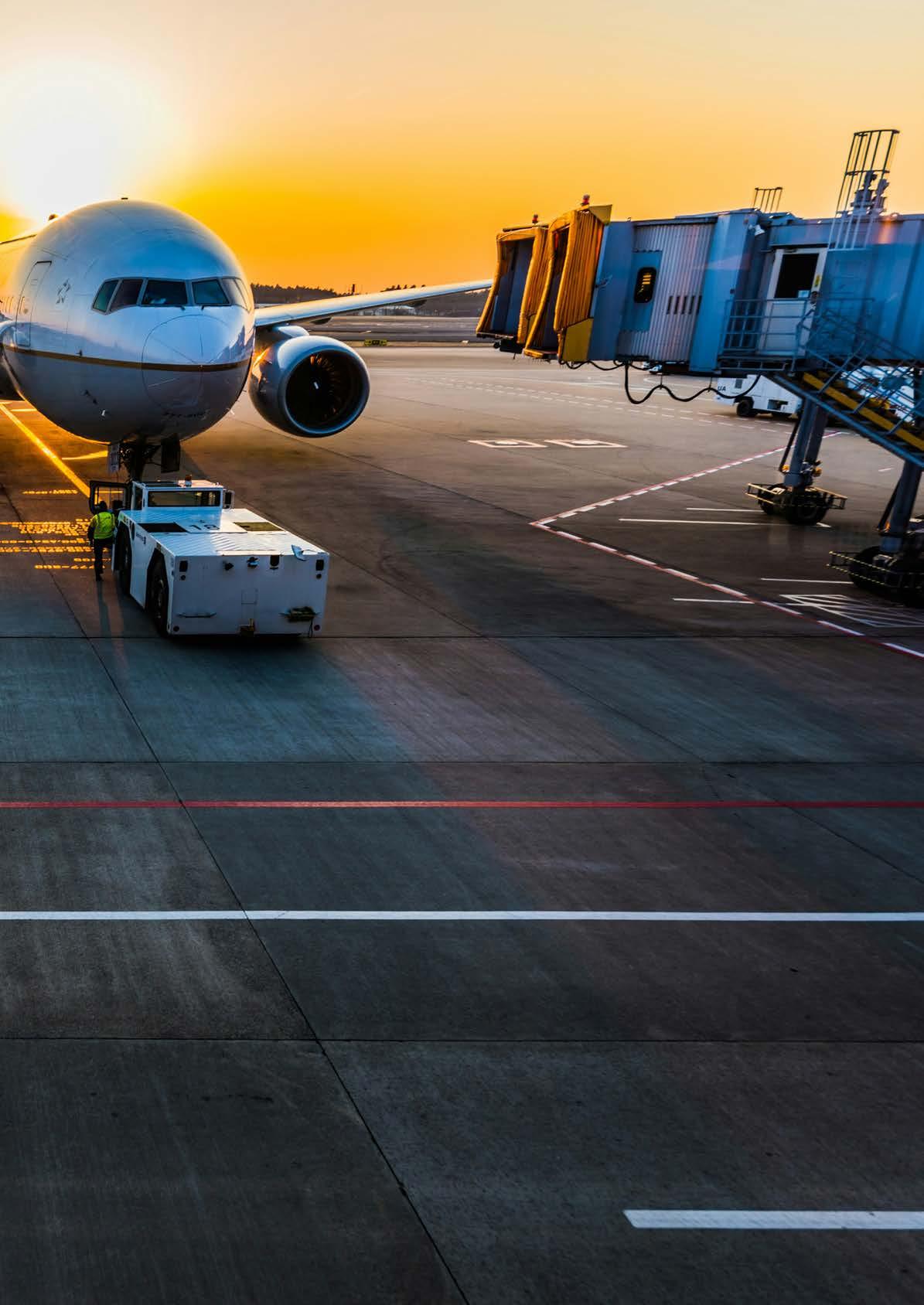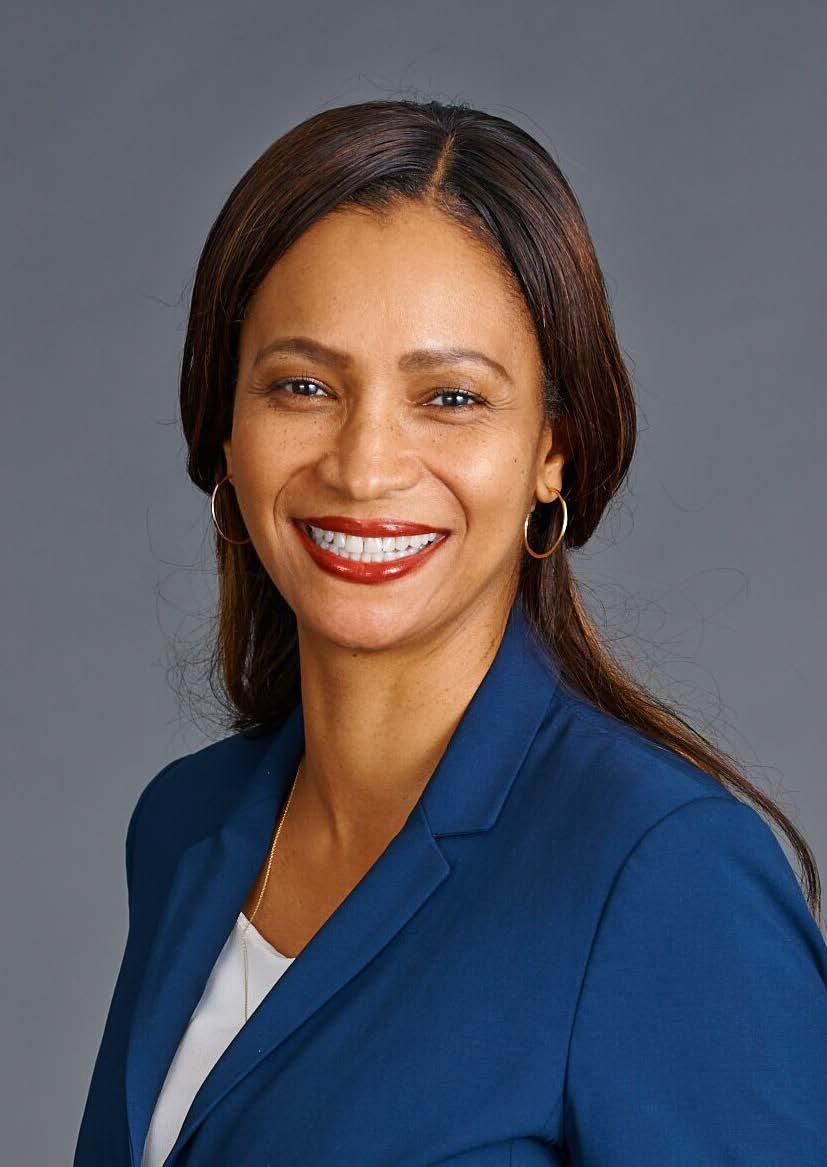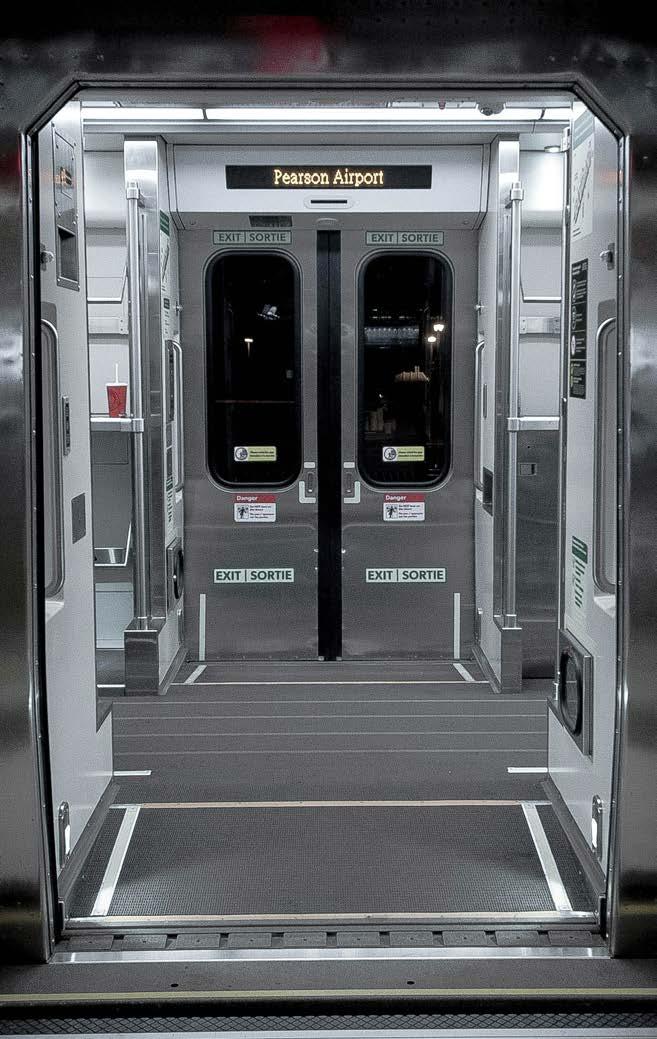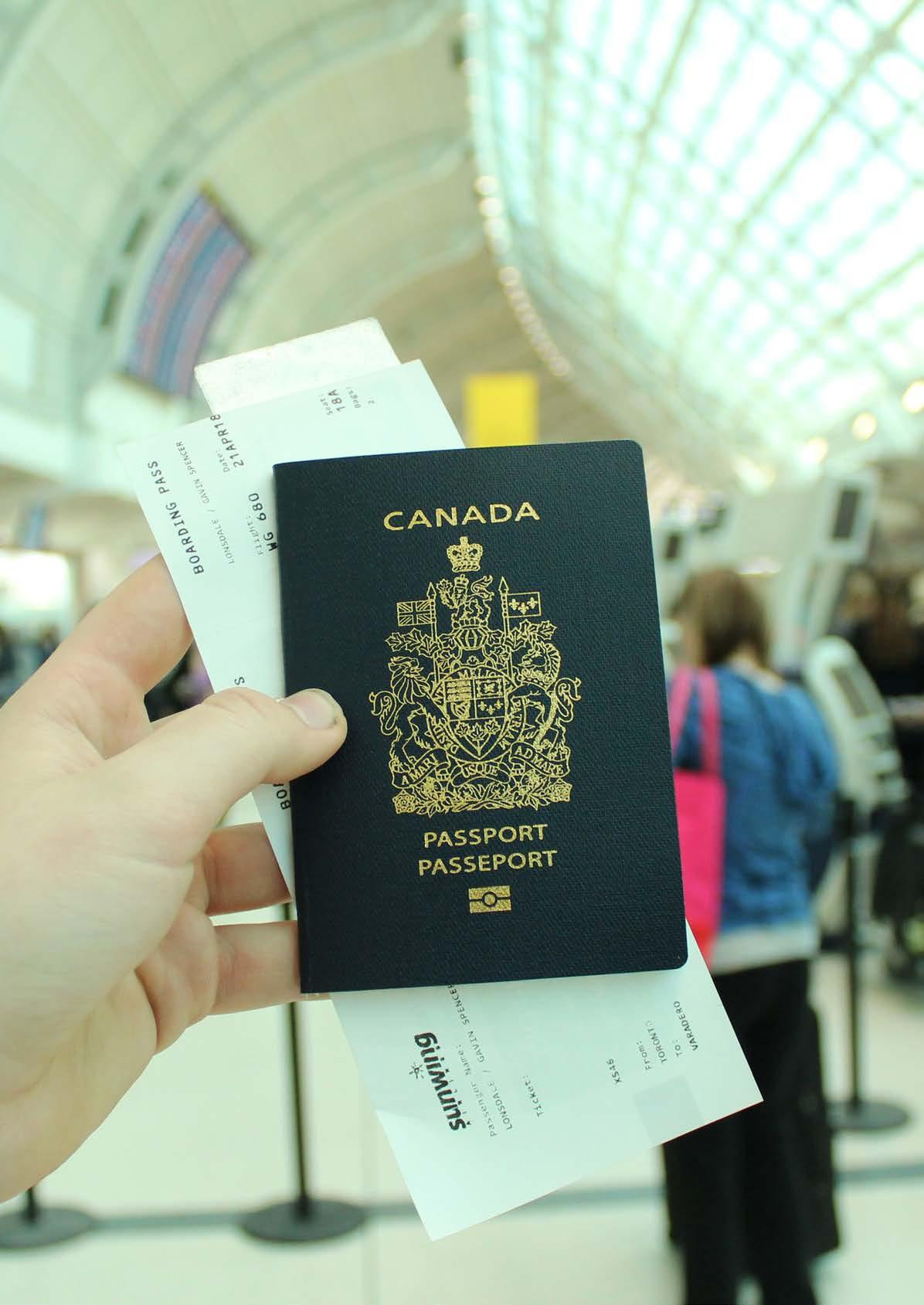








Project by: Malvern Kandemwa
Words by: Michelle Duncan
As the President and CEO of the Greater Toronto Airports Authority, which operates Toronto Pearson International Airport, Flint has extensive experience in the field of aviation, with her career nearing the 27-year milestone. A graduate of San Jose State University in California, she began her journey in aviation as the Avi-
ation Director at the Port of Oakland, where she managed, developed, and operated Oakland International Airport, ultimately rising to the position of Executive Port Director. Her career then led her to Los Angeles, where she was appointed by Mayor Eric Garcetti as the CEO of Los Angeles World Airports, overseeing the operations of both LAX and Van Nuys Airport. It was following the successful execution of a comprehensive modernization program valued at US$15 billion, aimed at realising what she refers
to as a “fresh vision of what LAX could be,” that the opportunity in Toronto emerged for her. This role was particularly enticing for several reasons. “I’m Canadian by birth, but I hadn’t lived in Canada since I was quite young,” she reflects, highlighting her desire to reconnect with her roots while advancing her career in aviation.
Flint’s approach to leadership is holistic, considering not just the operational aspects of the airport but also its broader impact on the community and environ-
ment. She has emphasised the importance of collaboration both within the organisation and with external stakeholders as crucial to the airport’s success. Under her leadership, GTAA has prioritised sustainability, technological innovation, and strategic partnerships, setting a clear direction for the future of Toronto Pearson.
The Greater Toronto Airports Authority (GTAA) is a not-for-profit corporation that runs Toronto Pearson International Airport (YYZ), which is not only the busiest airport in Canada but also one of the top 30 busiest airports in the world by passenger traffic. In 2023, Toronto Pearson managed over 50 million passengers, a testament to its role as a crucial hub in North American and global air travel. The airport connects to over 180 destinations worldwide and serves as a major hub for both domestic and international flights, with extensive connections to the United States, Europe, Asia, and other regions.
The GTAA operates under a unique governance model where it does not receive taxpayer funding but instead reinvests revenue from operations back into the airport’s infrastructure and services. This business model has allowed GTAA to keep financial independence while focusing on continuous improvement and expansion to meet the growing demands of passengers and airlines.
Toronto Pearson plays a vital role in the Canadian economy, generating billions of dollars in economic activity and supporting tens of thousands of jobs directly

and indirectly. The airport’s operations include passenger services, cargo operations, ground transportation, and various ancillary services, making it a complex and dynamic organisation.
Why is Canada experiencing such rapid growth? “First, we are recognized as a country that genuinely cares about its people,” she emphasises. “We also have a welcoming approach to immigration, which is crucial in a global economy that relies on diverse skills and talents.”
Toronto Pearson, located in Canada’s second-largest employment zone where 300,000 jobs existed before the pandemic, holds a key position at the centre of Canada’s economic hub. “It’s a dynamic, advanced region of the country,” she notes, highlighting the US$41.3 billion pharmaceuticals and life sciences industry concentrated in the Greater Toronto Area.



“Some of the world’s most groundbreaking medicines have origins in the labs and manufacturing facilities of Dalton Pharma Services, a Toronto-based company with over three decades of experience in drug development, analysis, and manufacturing,” she continues. “Location has been a crucial factor in their growth and success.”
Another localised example of growth is the surge in artificial intelligence (AI) startups. “Ontario hosts an advanced manufacturing supercluster, centred in the Toronto-Waterloo innovation corridor, which is enhancing
next-generation manufacturing capabilities by integrating technologies like advanced robotics and 3D printing,” she explains. “The Toronto region is at the heart of Canada’s innovation and technological activity, consistently attracting top talent and leading-edge companies such as Cognizant and HCL Technologies.”
“The future of electric and intelligent transportation is also taking shape in Toronto. This year, the province’s automotive industry has experienced a significant increase in investment, particularly in the production of electric vehi-
As the leading global travel experience player, Avolta has united travel convenience, specialty retail, food and beverage, and duty free to reimagine travel — and make travelers happier.
Avolta’s extensive footprint globally across 1,000 travel venues in 73 countries means that its stores are available at the right place, at the right time, for travelers wherever their journey takes them.
Throughout North America, Avolta’s family of brands — HMSHost, Hudson, and Dufry — are known for its innovation, vast portfolio of concepts and partners, operational excellence, and customer service. Individually, each is highly respected for what they do. But together, they are revolutionizing the travel experience.
At Avolta, the traveler is at the heart of everything. From pushing the boundaries of travel retail and staying ahead in convenience to redefining the art of food and beverage, Avolta never ceases to deliver what travelers need and want to create an inspiring, seamless experience.
At Toronto’s airports, Avolta is making the journey as rewarding as the destination for domestic and international passengers alike. Its longstanding relationship with the Greater Toronto Airports
cles (EVs) and large-scale EV battery manufacturing. Additionally, with expertise in AI, connectivity, cybersecurity, and quantum computing, more than 250 companies in Ontario are now actively engaged in the development of connected and autonomous vehicles.”
As Canada prepares for the future with a growing population and the rapid expansion of dynamic industries, Toronto Pearson must evolve alongside it, according to Flint. “This airport should be the most technologically advanced, seamless, and customer-centric airport in the world,” she envi-
Authority has brought excitement to the terminals at Toronto Pearson International Airport (YYZ) and Billy Bishop Toronto City Airport (YTZ). Its duty-free and specialty retail stores offer the most internationally recognized and sought-after brands like Chanel and MAC, while its restaurants create a sense of place — and a taste of the community — through partnerships with locally loved chefs such as Lynn Crawford, Susur Lee, and Roger Mooking.
The voyage through Toronto’s airports is only enhanced by Avolta’s focus on digital engagement, whether it be self-checkout, selforder kiosks, mobile order and pay, its loyalty program, or through OpenTable reservations at restaurants.
ESG also continues to be a defining ambition for Avolta, as it embeds into its culture, as part of its Destination 2027 strategy, the act of creating a positive impact through its day-today business.
As Avolta forges a path for the future of travel alongside its partners and team members in North America and around the world, it will continue to bring immense value to create the next generation of world-class airports.



sions. Flint emphasises that this ambitious vision is what “we are working on collectively every single day.”
Flint believes that “passenger traffic is the heartbeat of any airport,” making the mass cancellation of flights and the drastic reduction in passenger numbers due to the COVID-19 pandemic particularly devastating. “We have sustained significant financial losses, totalling CAD$1.1 billion [US$855 million] by the end of 2021,” she explains. “Year over year, passenger traffic dropped by 74 percent in 2020, and in 2021, traffic declined by an added 4.6 percent compared to 2020, highlighting that we still have a long road ahead in our recovery. As the country embarks on its path to recovery, the airport and the surrounding employment zone

will play a crucial role in supporting that process. Our top priority is to keep travel healthy, safe, simple, and as certain as possible amidst the ever-changing travel restrictions,” Flint emphasises.
Under Flint’s leadership, revenue diversification has become a central pillar of Toronto Pearson’s strategic direction, with the health sector appearing as a particularly promising area of opportunity. “We explored the market for strong partners to integrate health practices into the airport environment,” she explains.
In 2021, Toronto Pearson partnered with Switch Health, a Toronto-based healthcare company, to provide COVID-19 testing for departing passengers, employees, and the surrounding community. “This partnership offered the con-
venience of onsite services at the airport,” Flint says, highlighting the benefits of having a testing clinic that runs around the clock, in line with the airport’s 24/7 operations.
This initiative not only met a critical need during the pandemic but also created a new revenue stream, helping to support the airport’s financial recovery. “Our business model ensures that customers receive essential services at competitive rates while generating income for the airport,” she adds.
The collaboration with Switch Health has been so successful that Flint is now exploring the possibility of expanding this model to other airports. “We have positioned ourselves as a creative leader in the aviation test-

At HOK, we are passionate about aviation and transportation. Our global Aviation + Transportation group understands the power these civic projects wield in shaping impressions and sparking opportunities for commerce, trade and tourism. The airports and transit stations we’ve designed are recognized as some of the world’s best for efficiency, beauty, engineering, sustainability and—the most important touchstone of all—traveler experience.
ing space, which is crucial as the industry must remain agile to adapt to evolving border requirements worldwide,” she notes.
This partnership has become a key commercial part of Toronto Pearson’s operations, and Flint expects that added health services will appear from it. “We’re thrilled to be involved in this sector because health and travel will be permanently interconnected,” she predicts. “The lessons we’ve learned from this pandemic have underscored the importance of being prepared for future infectious disease outbreaks.”
As Flint looks ahead to Toronto Pearson’s recovery and longterm growth, she acknowledges the challenges of predicting the future in such uncertain times. However, she emphasises the importance of scenario planning and modelling as invaluable tools in navigating these uncertainties. “While it’s difficult to forecast the exact trajectory of our growth, especially in the current environment, we rely heavily on scenario planning to prepare for a range of potential outcomes,” Flint explains. This approach allows the airport to still be flexible and responsive to whatever challenges and opportunities may arise in the years ahead.
An airport of the future, by definition, must also be a sustainable one. “I’m very proud to be part of the aviation industry’s commitment to achieving carbon neutrality by 2050,” Flint states. At Toronto Pearson, she is building on a solid foundation. “We have a strong history in sustainability,”
she notes, highlighting that the airport has already reduced its greenhouse gas emissions by 60 percent since 2006. This commitment to sustainability is central to the airport’s long-term vision, ensuring that it not only meets the needs of today’s travellers but also contributes to a healthier planet for future generations.
Flint acknowledges that reaching the carbon neutrality target will be a significant challenge for the aviation industry, but she stays “bullish” about its potential to succeed. “We need to work collectively and collaboratively to meet this goal,” she emphasises.
Achieving carbon neutrality will involve multiple strategies. “Sustainable aviation fuels will play a crucial role,” she notes, “as will advancements in aircraft technologies.” Additionally, Flint points out that airports themselves must be prepared to support these changes. “The airport and its facilities will need to accommodate next-generation aircraft to support these efforts,” she says, underscoring the comprehensive approach required to realise a sustainable future for aviation.
Flint’s optimism about the future of Toronto Pearson and the broader airport industry is fuelled by the technological advancements occurring across all aspects of airport operations. “The innovations happening in the air, on the ground, within our facilities, and with our partners give me a lot of optimism about the significant challenge of greening the airport industry,” she says.
Despite her focus on sustainability, Flint stays deeply aware of the importance of the airport’s experiential aspect. “The best airports understand how symbolic they are to what their country represents,” she asserts. She is enthusiastic about the chance to highlight Canada’s strengths through Toronto Pearson. “We’re an epicentre of innovation and economic development, but we also have a rich cultural landscape, including the arts and entertainment,” she notes, highlighting the Toronto International Film Festival as an example. “By integrating humanity and art into the airport environment, we reflect the culture and values of Toronto and Canada.”
Creating a smart, healthy, and profitable airport of the future has been Flint’s guiding principle from the outset of her tenure. It has been her North Star, especially during challenging times over the past two years. “As a CEO, I believe it is crucial to ensure that your organisation, particularly one with complex and specialised functions—has a clear understanding of what success is anchored upon,” she advises, underscoring the importance of alignment and vision in leading an organisation through transformative periods.

